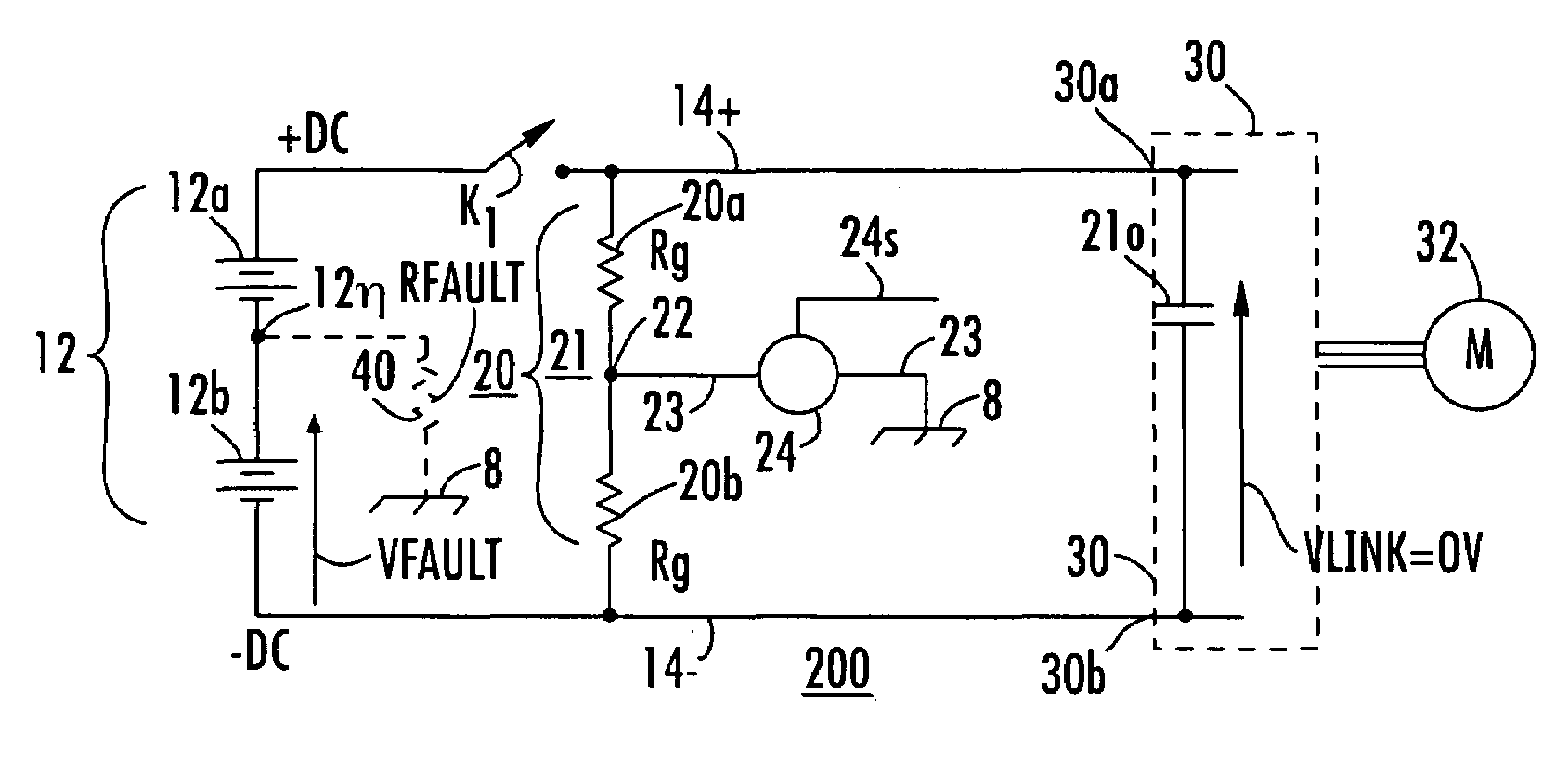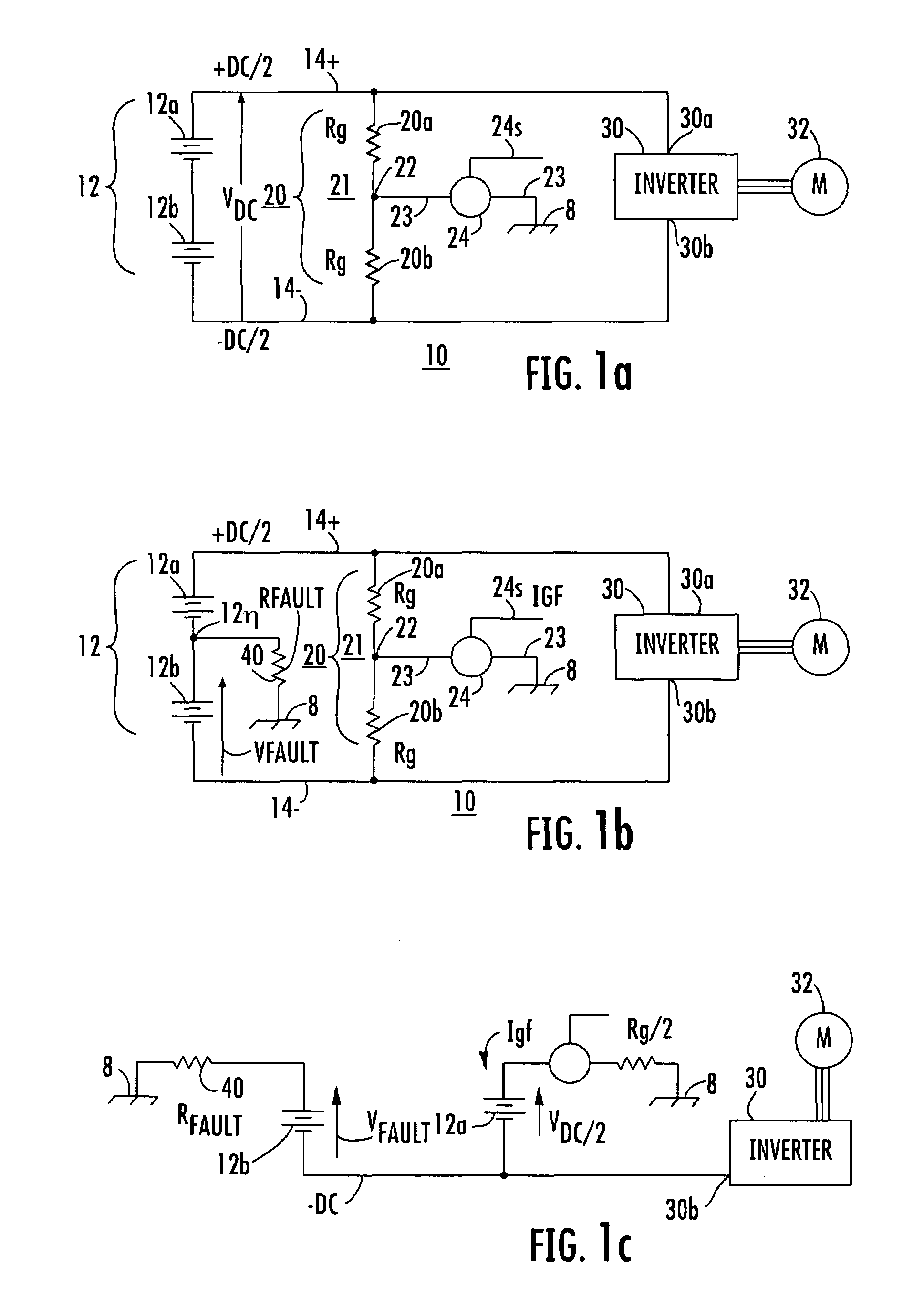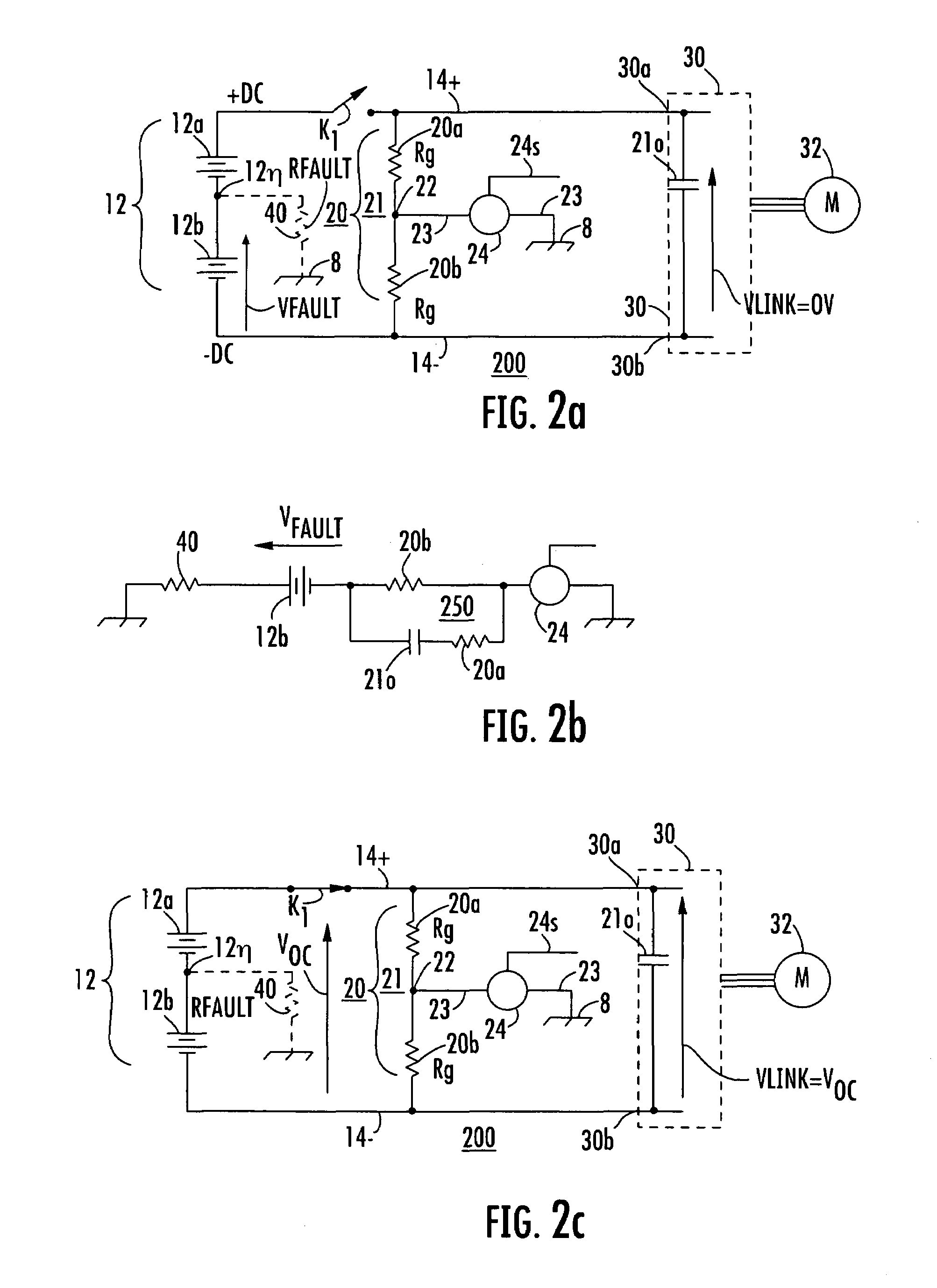DC ground fault detection with resistive centering
a resistive centering and ground fault technology, applied in the direction of power supply testing, instruments, circuit testing, etc., can solve the problems of high electrical reliability and safety concerns of hybrid electric vehicles, many deaths due to ac systems, and early alternating-voltage systems that are somewhat dangerous to the publi
- Summary
- Abstract
- Description
- Claims
- Application Information
AI Technical Summary
Benefits of technology
Problems solved by technology
Method used
Image
Examples
Embodiment Construction
[0030]In FIG. 1a, a direct-voltage powered system is designated generally as 10. System 10 includes a direct voltage source designated generally as 12, which includes plural series-connected voltage sources illustrated as electrochemical batteries 12a and 12b. While only two such sources or batteries are illustrated, three or more batteries may be series-connected or stacked to generate the voltage of source 12. Also, while the sources are illustrated as batteries, they may instead be externally-powered electronic devices. The direct voltage source 12 produces its voltage “between” the positive terminal of source 12a and the negative terminal of source 12b. Those skilled in the art know that the term “between” has a meaning in electrical parlance which is different from its meaning in mechanics or topology. The voltage felt “across” the voltage source 12 is designated VDC, and is represented by an arrow with the arrowhead adjacent the positive terminal, all as is conventional in the...
PUM
 Login to View More
Login to View More Abstract
Description
Claims
Application Information
 Login to View More
Login to View More - R&D
- Intellectual Property
- Life Sciences
- Materials
- Tech Scout
- Unparalleled Data Quality
- Higher Quality Content
- 60% Fewer Hallucinations
Browse by: Latest US Patents, China's latest patents, Technical Efficacy Thesaurus, Application Domain, Technology Topic, Popular Technical Reports.
© 2025 PatSnap. All rights reserved.Legal|Privacy policy|Modern Slavery Act Transparency Statement|Sitemap|About US| Contact US: help@patsnap.com



